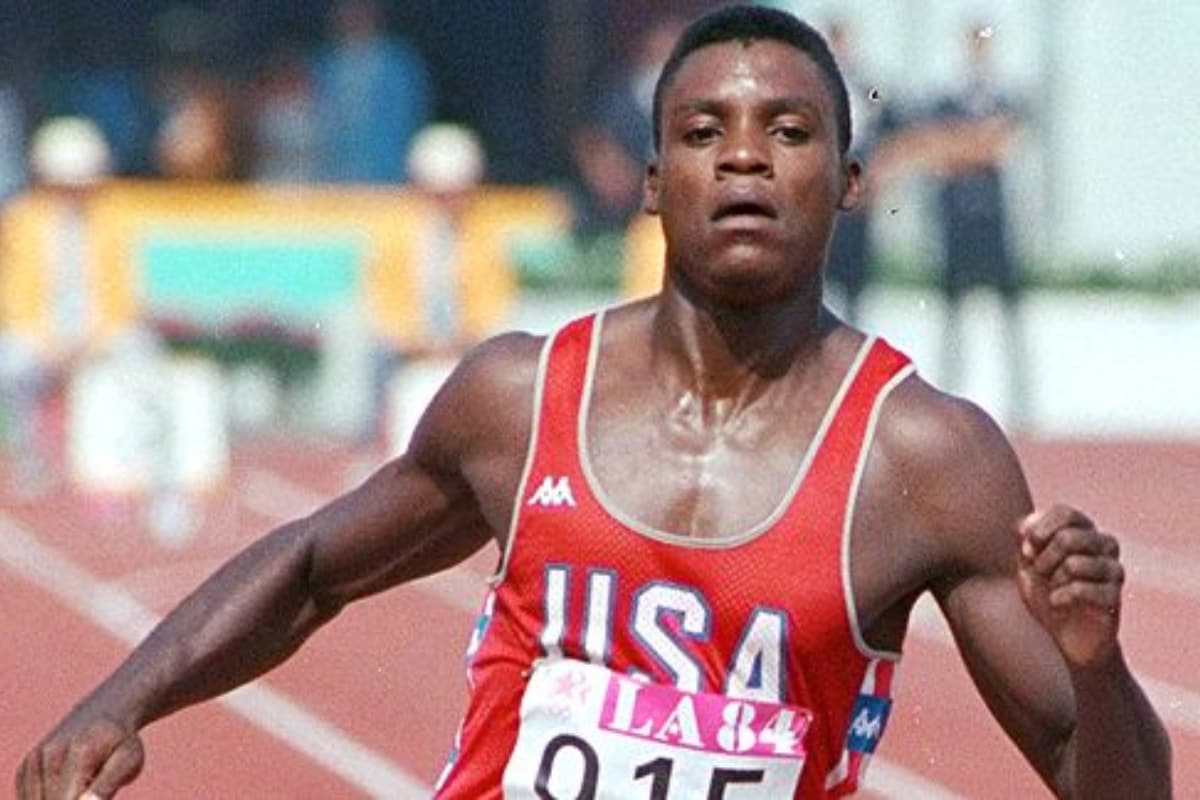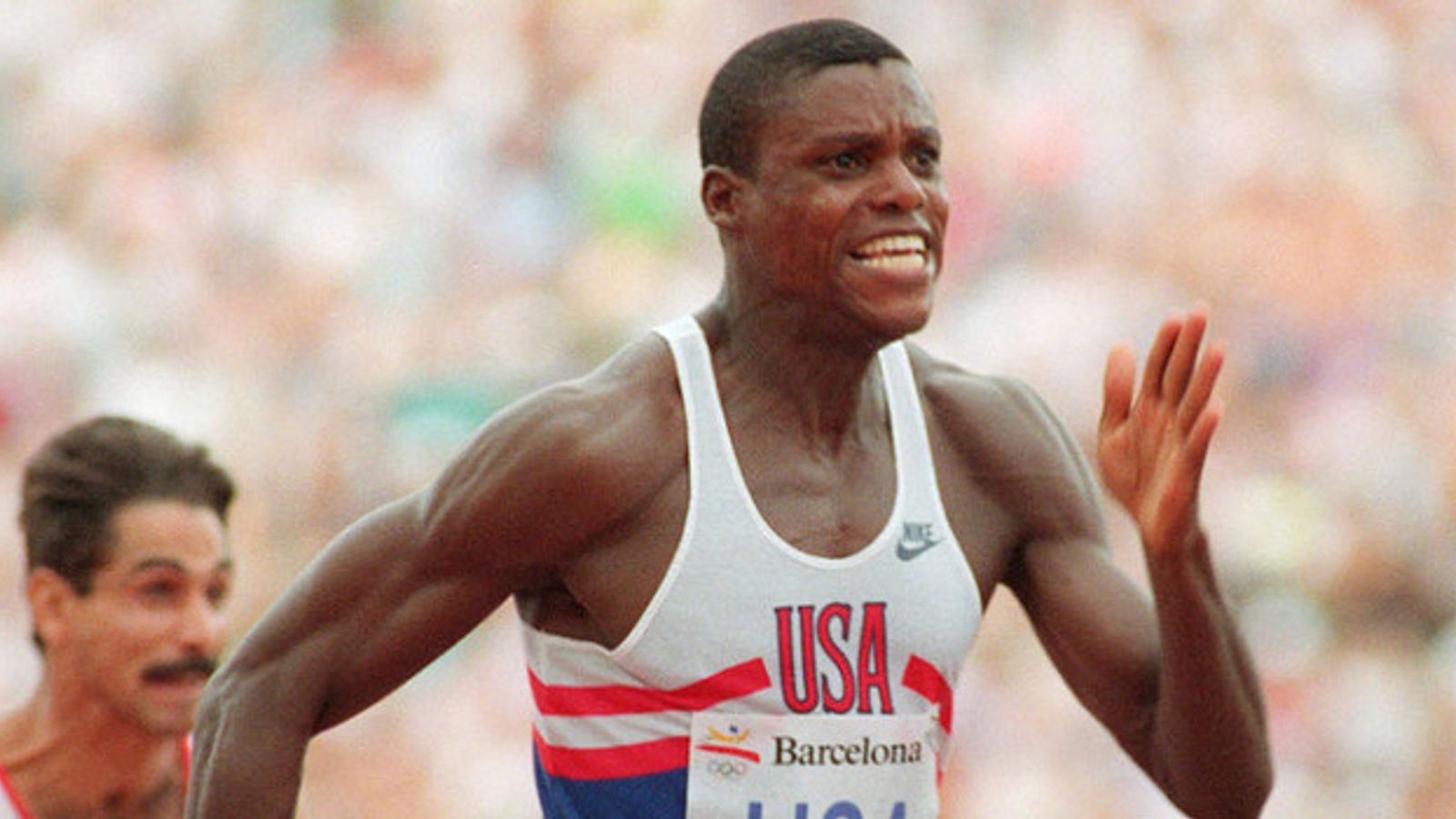Carl Lewis: A Legacy of Speed and Excellence

Carl Lewis, often hailed as “The Greatest,” stands as a towering figure in the history of track and field. His athletic prowess, combined with an unwavering commitment to excellence, transformed him into a global icon. This essay delves into the life and career of this extraordinary athlete, exploring his remarkable achievements and the enduring impact he left on the sport.
Early Life and Athletic Development
Carl Lewis was born on July 1, 1961, in Birmingham, Alabama. His athletic journey began at an early age, nurtured by a family deeply rooted in sports. His father, William Lewis, was a former sprinter, and his mother, Evelyn Lewis, was a high school track and field coach. Carl’s natural talent and dedication quickly blossomed, propelling him to prominence in high school. He excelled in various events, including sprinting, long jump, and triple jump. Lewis’s athletic prowess caught the attention of the University of Houston, where he continued to hone his skills under the guidance of renowned coach Tom Tellez.
A Timeline of Triumphs
Carl Lewis’s athletic career was a tapestry woven with gold. His dominance in track and field is evident in the numerous accolades he accumulated:
- 1980 Olympic Games (Moscow): Despite the United States’ boycott, Lewis demonstrated his potential by winning the long jump at the US Olympic Trials.
- 1983 World Championships (Helsinki): Lewis secured his first World Championship title in the long jump, establishing his global presence.
- 1984 Olympic Games (Los Angeles): Lewis achieved legendary status by winning four gold medals in the 100 meters, 200 meters, long jump, and 4×100-meter relay. This feat, replicating Jesse Owens’ accomplishment in 1936, solidified his place in track and field history.
- 1987 World Championships (Rome): Lewis continued his dominance, winning the 100 meters and long jump, solidifying his reign as the world’s best.
- 1988 Olympic Games (Seoul): Lewis defended his long jump title and added a gold medal in the 4×100-meter relay, showcasing his remarkable consistency.
- 1991 World Championships (Tokyo): Lewis achieved a historic triple victory, claiming gold in the 100 meters, long jump, and 4×100-meter relay, cementing his legacy as a track and field icon.
- 1992 Olympic Games (Barcelona): Lewis added another gold medal to his collection in the long jump, showcasing his enduring athleticism.
- 1996 Olympic Games (Atlanta): Lewis, at the age of 35, secured a fourth consecutive Olympic long jump title, a feat unprecedented in the history of the event.
Impact on the Sport of Track and Field
Carl Lewis’s impact on track and field transcended his own athletic achievements. His influence extended to other athletes, inspiring them to strive for greatness. His meticulous training regimen and unwavering dedication set a new standard for professionalism in the sport. Moreover, Lewis’s commitment to clean competition and his vocal opposition to performance-enhancing drugs helped shape a more ethical landscape in track and field. Lewis’s exceptional athleticism pushed the boundaries of human performance, setting records that stood for years. His feats inspired generations of athletes and left an indelible mark on the sport.
The “World’s Fastest Man”

Carl Lewis’s reign as the “World’s Fastest Man” was not simply a matter of speed; it was a testament to his exceptional athleticism, strategic prowess, and unwavering dedication. He possessed a unique combination of speed, agility, and explosive power that set him apart from his contemporaries and earned him a place among the greatest sprinters of all time.
Carl Lewis’s Athletic Abilities
Lewis’s athleticism was a symphony of power and precision. His long strides, generated by powerful leg muscles, propelled him forward with astonishing velocity. His agility allowed him to react quickly and change direction with ease, making him a formidable competitor in both the 100-meter and 200-meter races. He was also known for his explosive power, which enabled him to accelerate rapidly from the starting blocks and maintain his momentum throughout the race.
Comparing Carl Lewis’s Running Style to Other Legendary Sprinters
Carl Lewis’s running style differed significantly from other legendary sprinters like Jesse Owens and Usain Bolt. Owens, known for his powerful and fluid strides, employed a more upright running style, while Bolt’s long strides and signature “lean” gave him an aerodynamic advantage. Lewis’s style was characterized by a more compact and efficient approach, focusing on maximizing his stride frequency and minimizing air resistance.
“Lewis’s style was a blend of power and finesse, with a focus on efficiency and economy of motion.” – Track and Field Expert
Carl Lewis’s Training Methods and Strategies
Lewis’s training regimen was a meticulous blend of strength training, speed drills, and endurance work. He focused on building a strong foundation of power and speed, while also developing the endurance necessary to maintain peak performance over multiple races. His training methods included:
- Strength Training: Lewis incorporated a variety of weightlifting exercises to build muscle mass and power in his legs and core.
- Speed Drills: He practiced various speed drills, such as sprints, plyometrics, and agility exercises, to refine his technique and improve his acceleration and top-end speed.
- Endurance Work: Lewis incorporated endurance training into his regimen to enhance his ability to maintain peak performance over multiple races and throughout his long career.
Lewis’s training methods were designed to maximize his potential and minimize the risk of injury. He meticulously monitored his progress and made adjustments to his training plan as needed. His dedication to training, combined with his natural talent, played a crucial role in his dominance in the world of sprinting.
Beyond the Track

Carl Lewis’s influence extended far beyond the track, leaving an indelible mark on society and inspiring generations. He was a vocal advocate for social justice, a multifaceted individual who pursued diverse interests beyond athletics, and a role model who transcended the boundaries of sport.
Social Activism and Advocacy
Lewis was a staunch advocate for racial equality and social justice, using his platform to address issues that were close to his heart. He spoke out against racial discrimination and inequality, becoming a prominent voice in the fight for civil rights.
“I believe that every person, regardless of race or background, deserves equal opportunities and treatment.” – Carl Lewis
He actively participated in protests and demonstrations, lending his name and influence to causes he believed in. His activism was a testament to his commitment to social justice and his desire to create a more equitable world.
Post-Athletic Career
Lewis’s post-athletic career was as diverse and accomplished as his time on the track. He pursued a range of endeavors, demonstrating his versatility and entrepreneurial spirit.
- Acting: Lewis ventured into the world of entertainment, appearing in films like “The Twilight Zone” and “The Running Man.” His acting career showcased his talent and charisma beyond the athletic realm.
- Politics: He explored the political arena, running for a seat in the United States Congress in 1992. Although unsuccessful, his foray into politics reflected his interest in public service and his desire to contribute to the betterment of society.
- Business: Lewis established a successful business career, launching his own line of athletic apparel and footwear. He also became involved in real estate ventures, demonstrating his business acumen and entrepreneurial spirit.
Carl Lewis, the epitome of athletic grace and dominance, exemplified the power of dedication and precision. His accomplishments, however, stand in stark contrast to the chaotic spectacle of the men’s steeplechase fall , where the inherent risks of the sport often overshadow the athletes’ individual brilliance.
Lewis, with his calculated movements and strategic prowess, would likely have viewed such a scenario with disdain, emphasizing the importance of control and discipline in achieving peak performance.
Carl Lewis, a titan of American athletics, dominated the track and field scene in the 1980s and 90s. His achievements, however, pale in comparison to the sheer audacity of Soufiane El Bakkali , a Moroccan runner who has redefined the 3000m steeplechase with his fearless approach to the water jump.
Lewis, with his meticulously planned races, would have likely struggled to adapt to El Bakkali’s unpredictable style, a style that has earned him a place in the pantheon of modern athletic greatness.